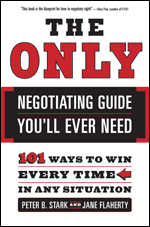 In our October 2011 issue of the Master Negotiator, we talked about the National Basketball Association’s (NBA) lockout and the inability of the Commissioner of the NBA, the team owners and the players to pull together a win-win outcome after months of on-going negotiation.
In our October 2011 issue of the Master Negotiator, we talked about the National Basketball Association’s (NBA) lockout and the inability of the Commissioner of the NBA, the team owners and the players to pull together a win-win outcome after months of on-going negotiation.
The three areas where both sides could not find agreement were: the division of revenues between the owners and the players, the structure of the salary cap system and the length of the players’ contracts.
A harsh reality the owners brought to light and remained steadfast was in the fact that 22 of the 30 NBA franchises were losing money each year and ultimately, the owners needed a Collective Bargaining Agreement that would help them run their teams like a business that consistently makes a profit.
In October’s newsletter, we made a few predictions. First, we said that the players would never gain back the money they were losing during the lockout by not coming to agreement. Second, that it would also be hard for the owners to quickly come to agreement because the league is composed of “haves,” the teams from big profitable markets, and the “have nots,” the less profitable teams from smaller markets. And third, we predicted that the lockout would be resolved in late December or early January.
On November 28th, the NBA came to agreement with the players after a 149 day lockout. We are proud to say that we were two for three in our predictions. First, the players will never gain back the money they lost while not playing. During the 2010 – 2011 season, the average salary of a NBA professional was approximately $5,000,000 a season. With the first 16 games scrapped due to the lockout, you can estimate that the player making an average salary lost about $1,000,000 not playing ball. This was a double whammy. Not only did the players lose money from the salary split from 57 percent to approximately a 50-50 split, they will never recover the salaries they lost.
Second, we predicted that it would be difficult for the owners to quickly reach consensus because of the large market (profitable) and smaller market (unprofitable) teams. What the owners did well was keep their differences under wrap and hold steadfast in their united goal of making the entire NBA a more competitive and profitable league. Also, some owners from the smaller teams were singled out for being holdouts. My inside sources say that the leaks about who was holding out were not even correct. The owners demonstrated a great example of the following tactic: the side who is least committed to the outcome holds the most power. The owners were not committed to playing the game if that meant continuing under a Collective Bargaining Agreement that lacked balance and fairness towards all teams. Great team owners show us that being united and not overly committed to a flawed past contract, can really help create a great negotiation outcome for everyone.
Third, on our final prediction that the lockout would be resolved in the last part of December or the first week in January, we were spot on. Part of our prediction was based on the last lockout. If the dispute was not resolved by the end of November, we felt confident that David Stern would have made a public announcement that if the contract could not be quickly reached, the NBA would abolish the whole season. Just like the 1998-1999 lockout, we felt confident that neither sides wanted this to happen, especially the players who risked losing an average of 5 million dollars.
What are our lessons to be learned in this negotiation? There are four of them.
-
Economics is the driving force. When you have a league of “haves” and “have nots” – a league when the NBA already owns one team that could not make it on their own – something had to be done economically for the entire league to be competitive and survive. When people see survival at stake, it makes it much easier to make your case and stand your ground.
-
It really helped the negotiation by having all the teams united in the goal of changing the Collective Bargaining Agreement in the best interests of the NBA. The Players Association did everything they could think of to try and divide the owners, but it did not work.
-
Fear was the deciding factor. The owners feared agreeing to a contract that was going to continue to create a losing business model. The players feared losing another paycheck. Ultimately, the fear of losing your next paycheck was even greater than the fear of entering into a bad contract that could lead to financial ruins.
-
Almost everyone, with the exception of the owners, lost. The players lost both in the short term and in the long term. The ushers, ticket takers, concession stand employees and security workers all lost. Some of these people relied on the income they make at the games to support their families. The businesses that make their living supporting the teams or surrounding the venue all lost. And last, the people who actually pay the bills – the fans – lost. Some of the fans have stated that they are so disgusted about the greed on both sides of the table that they will not go back to another game.
Final analysis? Lose, lose, lose, lose and a win.




Speak Your Mind